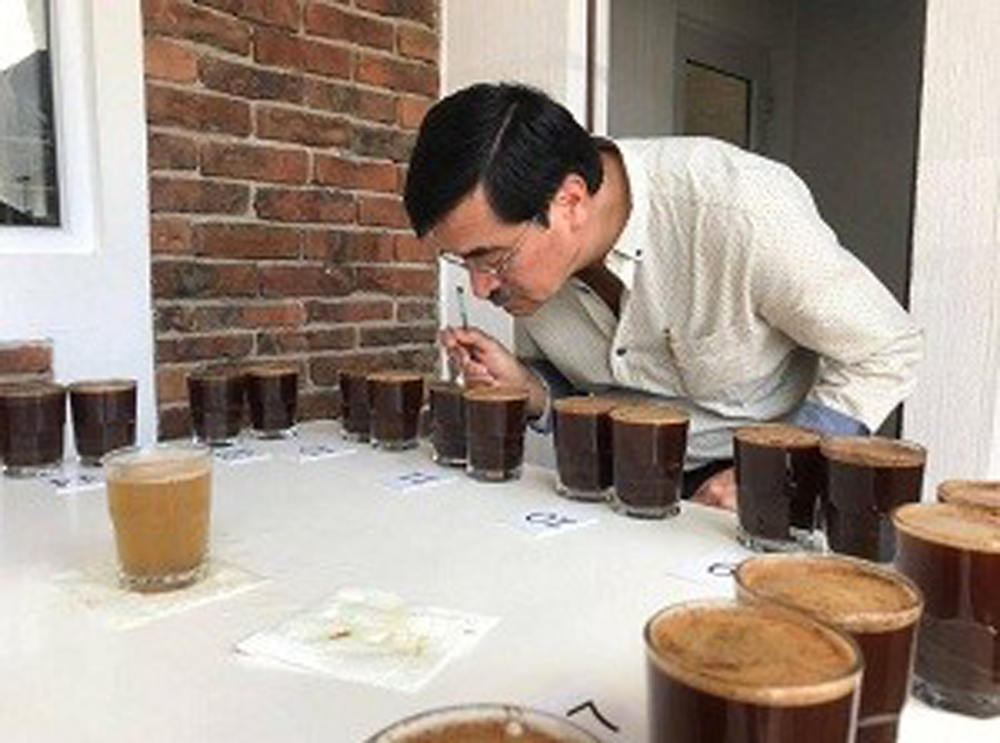The coffee prices on the two floors moved in opposite directions. Robusta turned up, while Arabica decreased. Coffee on the New York floor decreased when the USD increased slightly, as did weather information in Brazil. Meanwhile, Robusta is still supported by tight supply.
The correction was mixed after many previous sessions of strong fluctuations. Domestic coffee prices adjusted slightly down but remained at the highest level ever. The lowest price was 73,400 VND/kg recorded in Lam Dong, and the highest was 74,100 VND/kg recorded in Dak Nong.
Risk concerns increased as the market speculated that the US Federal Reserve (Fed) would not cut USD interest rates in March. Meanwhile, many major producing countries reported exports. The monthly increase contributed to motivating investors to adjust their net positions with very high volume due to being “overbought” in previous sessions.
The El Nino weather phenomenon on the Pacific Rim has caused supply concerns from countries in the world’s largest Robusta-producing region. In Southeast Asia, supply is also delayed due to shipping congestion, with farmers storing goods that cannot be sold.
In 2022, Vietnam will export a record amount of coffee, while harvest output will decrease by 10-15% compared to the previous crop, so the amount of coffee available for export in 2023 is low. Demand for Robusta increased sharply in the context of consumers tightening their spending because of rising interest rates and a gloomy economy, pushing prices up even more.
Climatic conditions in Brazil, inventory data tracked by ICE London and New York exchanges, and geopolitical conflicts continue to be in the spotlight. In some producing countries, there is still price resistance, causing business to slow down.

In Vietnam, coffee exports continued to increase in the last month of 2023, thanks to additional supply from the 2023–2024 harvest and high demand from international importers. At the end of the year, coffee exports reached more than 1.6 million tons (about 27 million bags), down 8.7% compared to 2022, but turnover increased by 4.6% to a record level of more than 4.24 billion. USD.
ICE inventories: Europe reported an increase of 1,480 tons on January 23, equivalent to an increase of 5.05%, recording the first day of increase after 3 consecutive weeks of decline and also contributing to promoting negative price adjustments in the markets.
The US Department of Agriculture (USDA) forecasts that global coffee production in the 2023–2024 crop year will reach 171.4 million bags, while consumption will be at a record level of 169.5 million bags. World coffee inventories are expected to fall to a 12-year low of 26.5 million bags.
This agency also believes that this year, the Vietnamese coffee industry will continue to benefit from the increase in Robusta coffee prices due to concerns about supply shortages. Although Vietnam’s harvest is in full swing, the supply is not as strong as in previous years.
People tend to limit selling to wait for prices to rise, pushing up domestic coffee prices continuously, the Import-Export Department said. In the 2023–2024 crop year, Brazil’s coffee production is forecast to increase by 3.7 million bags to 66.3 million bags. Mainly due to Arabica coffee output increasing by 5.1 million bags to 44.9 million bags.
Arabica coffee trees in many Brazilian production regions continue to recover after the severe frost, high temperatures, and below-average rainfall that occurred in 2021 caused coffee production to decrease in the 2021–2022 crop year and in 2022–2023.
However, Brazil’s Arabica coffee output is still significantly lower than the peak of nearly 50 million bags in previous crop years. On the contrary, Brazil’s Robusta coffee output is forecast to decrease for the first time after six consecutive years of growth, with a decrease of 1.4 million bags to 21.4 million bags. Reduced rainfall and low temperatures during the flowering period reduced yields in Espirito Santo State, Brazil’s main Robusta coffee-producing region.
Source: Tincaphe.com



 Tiếng Việt
Tiếng Việt